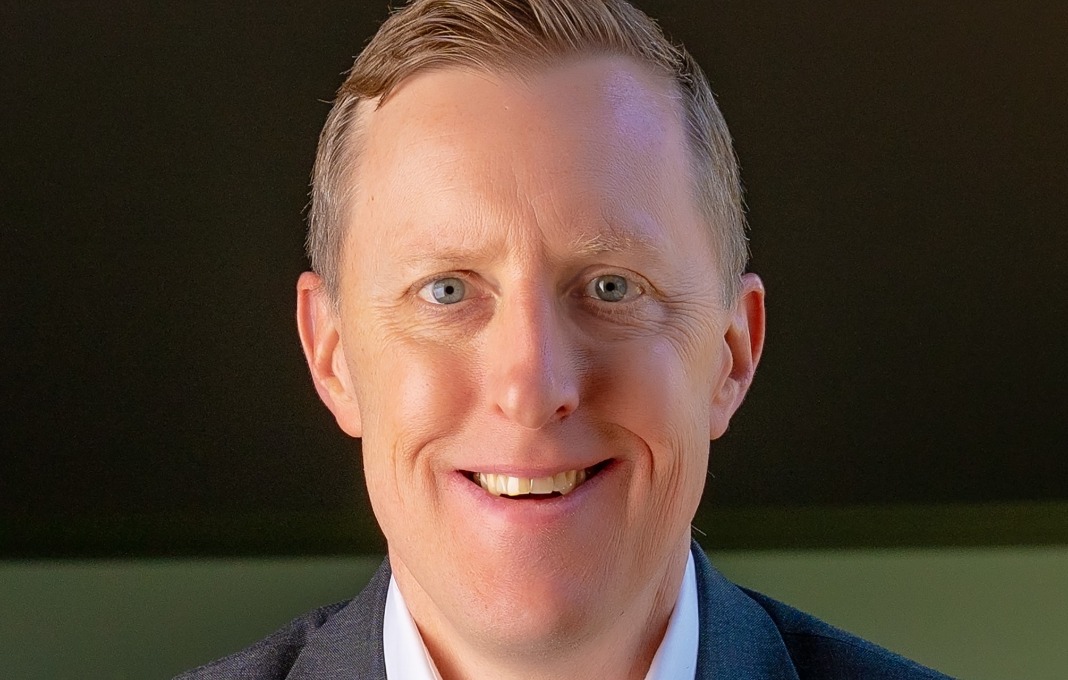Doug Chambers figures all of his quarter-century of financial experience, including long stints in public accounting and business management, have helped prepare him for his current assignment: strategically shepherding the finances of a company that is a leader in an industry facing a slog right now.
Chambers is executive vice president, CFO and treasurer of $3.95 billion UScellular, part of Chicago-based Telephone and Data Systems, one of the small handful of wireless telecoms that remain in what has become a mature business. The go-go era of fast-rising revenues for these companies has passed as cellphones have become ubiquitous, and the jolt of revival they expected from the onset of 5G technology hasn’t materialized to the extent they expected.
“The entire wireless industry is in slower-growth mode,” Chambers tells StrategicCFO360. “It’s much different than in the ’90s, when we were as an industry still in very-high-growth mode, adding customers. Now we’re to the point where, from a penetration standpoint, the number of customers with a wireless device is fairly fixed. We’re just growing with population growth. There is some incremental growth as people get multiple devices, but that’s in the low single digits,” percentage-wise.
“And the annual revenue per user is even challenged because it’s a very competitive space. There’s only so much you can do in raising prices.”
Chambers graduated from the University of Wisconsin and leapt into public accounting with PwC in Milwaukee and then in Chicago. “That 12 years afforded me experience on the audit side, and in financial consulting, and it included a lot of work for telecom clients going into the Telecommunications Act of 1996” that shaped today’s industry, he says.
“You’re exposed to many different businesses and dozens of clients. You get to be on the inside of many different businesses and understand what they do well and don’t do well and understand how different people lead and operate. But I decided I didn’t want to do public accounting forever.”
Chambers leapt to Midway Games in Chicago to lead their accounting and reporting area of the videogame publisher. “That was a fantastic experience, in the entertainment industry,” he says. “It gave me the opportunity to really learn, lead and manage a business. It’s one thing to be in a client-services business but another thing to be responsible for managing a day-to-day business. It taught me how to budget, how to communicate with investors, what you need to do by the way of cash management, forecasting, board communications—all those types of things.”
The experience “prepared me well,” Chambers says, for his next move, in 2007, to TDS, where he most recently served as senior vice president of finance and chief accounting officer. Along the way, Chambers earned an MBA at Northwestern University’s Kellogg School of Business.
The role at TDS that helped catapult him to his current charge, Chambers says, was heading financial planning and analysis. “That’s where you start to understand, ‘We’re running a business here,’” Chambers says. “You think about business strategy, capital allocation, decision-making, and that really enhanced my business acumen quite a bid. I was effectively leading decision support for the CEO [LeRoy T. Carlson Jr.], dealing with the most critical strategic and operational issues.”
Here are some things Chambers is emphasizing as CFO of UScellular:
Creative cost optimization. TDS, UScellular and the rest of the wireless industry was optimistic that 5G technology “would lead to a lot of new use cases and revenue streams” after it was rolled out about five years ago,” he says, and some things such as edge computing “have yielded some amounts of new revenue.”
“But the promise of significant new revenue streams hasn’t come to fruition with 5G, so cost optimization for everyone is more critical than ever, and how to manage profitability,” he says. “It’s always tedious, but it’s necessary to be effective in cost optimization.”
A pillar of Chambers’ approach is what he called a “fairly robust, enterprise-wide program” that segregates 10 virtual “campuses” organized around business functions such as engineering, IT, finance, HR and sales, each with leaders who are responsible for leading the function and delivering on their financial targets.
“We gave the leaders a lot of autonomy,” Chambers says. “It wasn’t finance coming in and saying, ‘We know what’s best, and here’s where you’re going to make cuts.’ In our organization, that wouldn’t be effective. Peers told me, ‘Give me a target, and I’ll figure it out for the business; we don’t want [finance] telling us what to do.’ That’s a fair ask.”
But instead of simply granting “campus” leaders such autonomy, Chambers also initiated a benchmarking exercise that determined the status of each function “in cost structure, and where they needed to be at based on benchmarks,” he says. “We gave the flexibility and autonomy in how to do it, but they needed to hit those targets. It’s been effective, and we are still executing on those targets; we just lowered them further.
“Leaders appreciate the autonomy and respond,” Chambers says. “It’s getting the results we want and giving leaders the flexibility to find savings in areas they believe are the best areas to mine for savings. It’s been effective and not heavy-handed, and that’s why it’s working.”
Centralize shared services. TDS has three entities overall, including a broadband sibling of UScellular. “That means over time we’ve often built three of everything: three HR departments, three accounting departments, three credit-collection areas and three IT departments,” Chambers says.
“So we have stepped back and said, ‘If this is a function that isn’t customer-facing, or it is back-office, how are all three of you providing value to enterprises?” he says. “In many cases, they are not. So for more than a decade now, we have been combining back-office functions into one [node]: cash accounting, accounts payable, payroll, income tax and compliance, and the treasury function. Then we pushed the envelope even more in 2023 and said, ‘Why not have just one account6ing department?’
“When you have one back-office function instead of three, you can generally do it more efficiently with fewer people. And we give leaders what they need over time to make each area more integrated and efficient.”
This may mean individual leaders give up parts of their fiefdoms. For example, the company “lifted and shifted” about 60 people in accounting and reporting from UScellular to broadly shared services under parent TDS. “I gave up something in that,” Chambers says. “That function used to report to me. People generally don’t want to give something up. But the key was to council the three CEOs and CFOs of the units together to catalyze and provide sponsorship to make this happen.”
Experiment with AI. To take advantage of the new ferment around AI and, specifically, generative AI such as ChatGPT, the company spearheaded an “AI contest where the enterprise had people submit AI apps that they already were working on or contemplating doing,” Chambers says. “It was a way to build awareness.
“And we try to approach things from a problem-solving standpoint. What is the problem we’re trying to solve, and what is the process to make it better, and what are the tools to make it better? Instead of just walking around with AI as a concept and asking where we can try to cram it into this business, we are defining the problem, our approach, and figuring out the right solutions.”
Develop financial talent. Chambers says that TDS’s historical approach to developing talent helped broaden and amplify his experiences and skills and lead him to the role he enjoys now. He seeks to perpetuate this emphasis on talent development in part by forcing the issue with young leaders.
“People who have aspirations for higher-level leadership need to get out of accounting and into business such as FP&A, strategy, even supply chain and marketing, so they can understand what it’s like to operate a business and facilitate decision-making and think about strategy,” Chambers says.
“We focus on getting people into different jobs where they learn by doing, and with those experiences build a foundation to become higher-level leaders,” he says. “We put people into different jobs constantly; if they’ve been in a job two or three years, generally it’s time to move them.”








